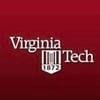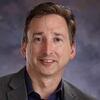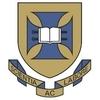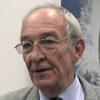Explore all the information on
Poultry welfare
Proper animal welfare involves providing the proper housing, management, nutrition, disease prevention and treatment, responsible care, humane handling and, when necessary, humane euthanasia. These factors allow for the most optimal and humane growing environment. The concept of animal welfare includes three elements: the bird’s normal biological functioning, its emotional state and its ability to express its natural behaviors. Improving animal welfare can be accomplished through offerings like poultry feed enrichment, which can reduce stress, thereby increasing performance, productivity and profitability. Animal welfare is currently a major requirement for intensive poultry production. Beak trimming, stocking density, free access to feed, heat stress, and air pollutants became important issues, which are regulated in several countries. Animal welfare is observed by watching how birds naturally behave and even by looking at mortality stemming from aggressive behaviors.
Importance of air quality control in poultry farms Air quality control in poultry production is key to maintain animal welfare , which is closely related to productivity and absence of diseases. When the air components are not in...
Comments : 42
Recommendations: 1
Raising the Status of Animals to Improve Welfare Standards Globally: A World Animal Day-2024 Distinguished Guests, Animal Advocates, and Friends, Tomorrow, we gather to celebrate World Animal Day-2024, a day with each platform that unites people from all walks of life, across the globe, in a shared mission: improving the welfare and status of animals. On this occasion, it is important that we reflect on the status of animals in our society and what we can do to ensure they are...
Comments : 0
Recommendations: 0
.jpg&w=3840&q=75)

Afla V ONE 5 - 300 ppb Method for Total Aflatoxin Detection in Complete Feeds and Pet Food
Suggested link
When building a new house or retrofitting an older one, tunnel fan selection is one of the most, if not the most important decision a producer has to make. A house’s fans are essentially the engine of the ventilation system and as a result have a significant effect on a producer’s ability to maintain the proper environmental conditions throughout the year. Furthermore, with rising electricity prices, selecting the right energy-efficient fan can save a producer thousands of...
Comments : 0
Recommendations: 1
Though it may not seem like it, each one-foot section of a five-foot-tall, six-inch pad has a tremendous surface area... well over 300 square feet. As a result, a house with two 70' X 5' evaporative pad systems has over 42,000 square feet of pad surface area from which water can evaporate and cool the incoming air. When we look at a 70' X 5' pad system, we can only see the 350 square feet of surface area, not the over 21,000 square feet of (60 times) interior pad surface...
Comments : 0
Recommendations: 0
1. Introduction The laying hen industry in the United States consists of approximately 330–340 million laying hens [1] that must first go through the growing phase known as the pullet phase. The pullet phase accounts for approximately 25% of a laying hen’s lifetime [2] and encompasses approximately 0–16 weeks of age (WOA). During this time, the pullet reaches sexual maturity and grows to its full skeletal capacity. Early experiences during the pullet phase,...
Comments : 0
Recommendations: 0
A poultry house controller's temperature sensors are, in a sense, its "eyes" enabling it to “observe” what is happening throughout a poultry house so it can accurately determine what equipment it needs to operate to maintain the proper environmental conditions throughout a house. As a result, a...
Comments : 0
Recommendations: 2
When designing a tunnel-ventilated house, it is important to install the proper amount of evaporative cooling pad. Too little pad will result in excessive static pressure, which will reduce air speed, and therefore bird cooling. Too much pad will result in increased initial cost, more pads to maintain/replace, and a larger area of reduced air movement near the tunnel inlet end wall. Pad area is based not on the size of a house but rather on the air-moving capacity of a house's...
Comments : 0
Recommendations: 0
Using evaporative cooling to keep birds cool during hot weather is relatively simple. Water is circulated over paper pads. Tunnel fans pull hot outside air through the pads and into the house. As the air moves through the wetted pads, its temperature decreases. Fairly straightforward. On the other hand, understanding how evaporative...
Comments : 0
Recommendations: 0
1. Introduction Ensuring efficient chicken farming is crucial, including prioritizing their welfare and health in agricultural production [1]. Individual variability in behavior enhances our understanding of how housing can be utilized differently by chickens. This may be due to individual preferences for certain types of equipment or impediments to access caused by dominant individuals [2]. This variability underscores the importance of improving accurate identification systems for...
Comments : 0
Recommendations: 0
Animal welfare audits are performed to evaluate whether a hatchery, farm, or processing plant is meeting the specific animal welfare standards of a certification program. These programs may be internal to a certain company, or they could be a requirement for animal welfare certification. These certification programs...
Comments : 0
Recommendations: 1
Damaging behaviors in poultry include feather pecking, vent pecking, and toe pecking. While feather and vent pecking are well-known welfare problems in poultry that have received significant attention from researchers and farmers, toe pecking remains relatively unknown. Therefore, this article aims to shed...
Comments : 0
Recommendations: 0
What is litter? Litter and its management are an essential part of bird management and ensuring bird welfare. This goes for broilers, turkeys, or laying hens kept on litter floors. Litter is a combination of the bedding used within a house combined with the excreta from the birds. Good quality litter provides...
Comments : 0
Recommendations: 0
1 Introduction Brazil’s food production is among the largest in the world. Poultry production ranks first globally among all the animal species used for food production. Brazil is one of the world’s leading chicken producers and exporters, while the state of Parana is the largest chicken meat producer and exporter in Brazil, representing more than 40% of Brazilian exports. The Brazilian Animal Protein Association (ABPA) reported that Brazilian chicken meat exports,...
Comments : 0
Recommendations: 0
The poultry industry plays a pivotal role in meeting global demands for protein-rich food. However, it faces significant challenges due to emerging infectious diseases, environmental concerns, and ethical considerations surrounding animal welfare. This abstract presents a comprehensive perspective on the integration of biosecurity measures within the framework of One Health, with the aim of enhancing the overall health, welfare, and productivity of commercial poultry operations. The concept...
Comments : 0
Recommendations: 0
In the face of escalating global concerns about the occurrence of animal disease outbreaks, effective and sustainable methods for the management of animal mortalities have become a critical component of public health and biosecurity strategies. This abstract presents a comprehensive overview of recent advancements in the field of animal mortality management, with a specific focus on innovative technologies, practices, and policies designed to mitigate the environmental, economic, and health...
Comments : 0
Recommendations: 0
Thermal stress happens when the animal leaves its thermal comfort zone, it means neither too cold nor too hot, let's say it feels good. In both of the cases, the stress due to heat and cold, the problem itself is not the temperature alone, but its relation to relative humidity level. The...
Comments : 8
Recommendations: 4
The Australian Egg Industry has identified opportunities to optimise production performance, health, flock consistency and egg quality through best practice. Using a cross-sectional survey design for 3 stakeholder groups (farm staff, managers, and consultants), we assessed current knowledge, attitudes, practices, barriers and enablers of adoption of best practices in poultry welfare, health, biosecurity and production performance. Of the 61 manager surveys posted, 27 were returned; of...
Comments : 0
Recommendations: 0
I. INTRODUCTION Phytogenic products are used as an antibiotic alternative, with other alternatives like prebiotics, probiotics, organic acids and other products with antimicrobial properties. The ability of phytogens to reduce the load of significant pathogens such as Clostridium (2020), Escherichia (Zou et al., 2016), and Salmonella (Abudabos et al., 2016), and improve the health and performance of chickens makes them increasingly popular. Phytogens also improve critical layer...
Comments : 0
Recommendations: 0
.jpg&w=3840&q=75)

Afla V ONE 5 - 300 ppb Method for Total Aflatoxin Detection in Complete Feeds and Pet Food
Suggested link
I. INTRODUCTION Wheat is the predominant feed grain in Australia and other dry regions in the world. Typical broiler diets in Australia contain 60-70% wheat. Climate-induced factors, including elevated temperature, have been reported as depressing crop production around the globe during the last few decades (Fernie et al., 2022) and there is limited understanding of how climate-induced factors may influence the nutritional quality of wheat. The sowing time of wheat is the most...
Comments : 0
Recommendations: 0
I. INTRODUCTION Brooding chicks with maternal care can improve the welfare of chicks; specifically, by improving prosocial behavior and reducing feather pecking (Edgar et al., 2016). Yet providing chicks mother hens in industry is impractical and a biosecurity risk. Artificial components of maternal care may provide some benefits to chicks and improve welfare. Indeed, there is some evidence that lighting that mimics the maternal environment, synthetic maternal olfactory cues and...
Comments : 0
Recommendations: 0







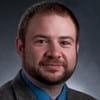
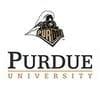
.jpg&w=3840&q=75)







